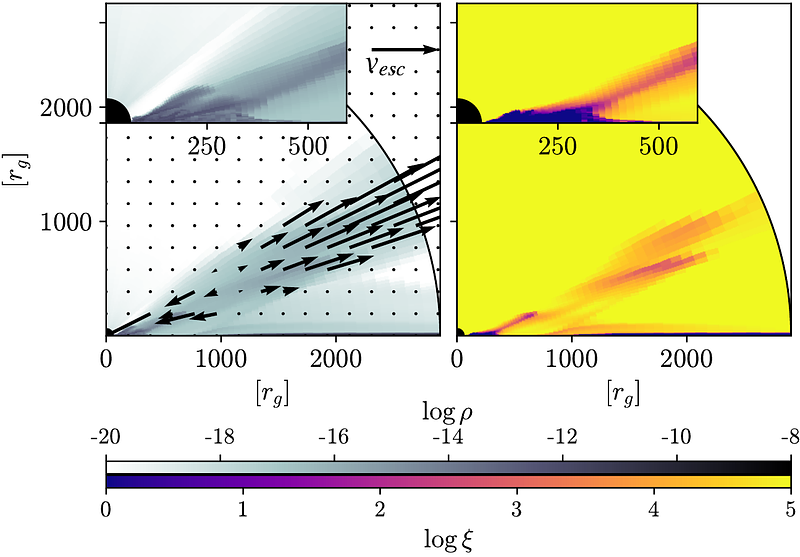Time-Dependent AGN Disc Winds II -- Effects of Photoionization

Time-Dependent AGN Disc Winds II -- Effects of Photoionization
Sergei Dyda, Randall C. Dannen, Timothy R. Kallman, Shane W. Davis, Daniel Proga
AbstractWe use a combination of radiation hydrodynamics (rad-HD) and photoionization modeling to study line-driven disc winds for a range of black hole masses. We refined previous models by incorporating heating, cooling, and radiation forces from spectral lines calculated using a photoionization code, assuming that composite AGN spectra irradiate the gas. For black holes with masses $3 \times 10^{6} \lesssim {\rm M_{BH}/M_{\odot}} \lesssim 10^{8}$, the mass loss rate, ${\rm \dot{M}_w}$ increases proportionally with the disk Eddington fraction, $\Gamma$. The insensitivity of ${\rm \dot{M}_w}$ to the hardness of the spectral energy distribution (SED) arises because the central region is dominated by radiation in the frequency range with ample spectral lines for the range of $M_{BH}$ considered here. Disc winds are suppressed or fail outside the above mass range because of a dearth of line-driving photons. We find \emph{stronger} winds, both in terms of ${\rm \dot{M}_w}$ and wind velocity compared to previous disc wind models. Our winds are stronger because of an enhanced line force from including many spectral lines in the X-ray band. These lines were unavailable and, hence, unaccounted for in previous photoionization studies and their subsequent application to AGN wind models. For $\Gamma \gtrsim 0.4$, ${\rm \dot{M}_w}$ is higher than the assumed disc accretion rate, implying that the wind feeds back strongly. Our findings indicate the necessity of utilizing comprehensive and current atomic data along with a more thorough approach to radiation transfer - both spatially and temporally - to accurately calculate the line force.